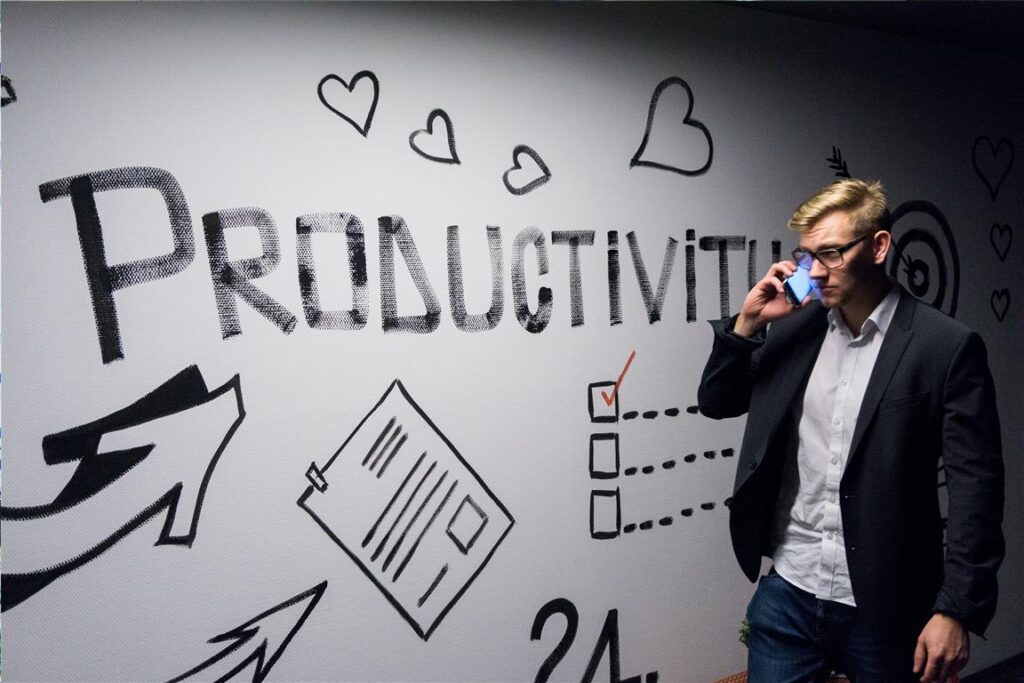
The key to productivity lies in modern technology. It continually evolves to enable us to complete more jobs more quickly and effectively. However, as business administration and customer service methods get more sophisticated, it becomes even more important to seek ways to increase business efficiency consistently.
The first compact computers’ introduction boosted commercial potential. After then, the Internet, emailing, social networking sites, and smartphones emerged. Artificial intelligence and improved system interoperability are now available.
Thanks to solutions like MyDirecteur, it’s now easier than ever to monitor essential company operations, assess staff efficiency, and collect project data.
These technologies have increased in value as more employees than ever before work remotely. The downside of this is that personal and professional time is now so linked that it is sometimes hard to declare a day off to work. Many of us now feel as though we are constantly working.
Is it feasible for businesses to evaluate daily team productivity effectively when so many employees work various shifts throughout the day? The desire to assess productivity may push some managers to the verge of micromanaging.
However, if you’ve established a strong culture of trusting your team and their talents, micromanaging may damage it.
Regardless of whichever Practice Management System (PMS) you use, We have listed some suggestions for gauging the performance of your remote employees without micromanaging them.
Measure Projects and Tasks Instead of Just Time
There would inevitably be some overlap between personal and professional life, particularly for remote employees at architectural, engineering, and professional services companies. Hence, companies should not bother with what their employees do during work hours until they complete all tasks on time. The most important aspect to consider is if they meet their deadlines while delivering the needed level of quality and accuracy.
Simply said, worrying about time is a poor micromanagement technique.
Additionally, maintaining the company’s workflow is as important as performing jobs and projects on schedule. Therefore, if the task heavily relies on cooperation or collaboration, the saying “at what time people finish their work doesn’t matter” may not be accurate. In this case, these employees must work simultaneously to avoid bottlenecks caused by personnel waiting for the previous work output to reach them.
Again, there is no reason to doubt flexible work times if workflow procedures operate well and clients are satisfied. At that point, it’s important to distinguish between jobs that “can be completed at any time” and those that “must be completed immediately in order to maintain workflow.”
Be Results-Oriented
When you measure activities and projects rather than time, you focus on the final product. Do not forget that your clients did not employ you to work for them for a set amount of time. They are paying your company to complete the task skillfully. As a result, it is essential to determine the total amount of time spent on tasks, but it is less crucial to know when that time was invested.
For instance, you might discover that staff members are more productive at particular times of the day. Therefore jobs requiring creativity or critical thought are sometimes simpler when there are fewer disturbances. Remote working may require working while others are not around and may not necessarily be on the same schedule as in a conventional office environment.
It would help if you asked your staff for input on this issue. Your primary priority should be gathering as much information as possible on your project’s workflow, including the customer experience. If you notice that something is operating smoothly, don’t interfere with it. However, if you discover that something needs redoing or minor adjustments, you will have the knowledge to do so.
Remember the objectives of your company.
Productivity at a company doesn’t occur on its own. While you should aim for increased productivity, do so without harming your company’s culture or deviating from your ultimate aims and objectives. Your company shouldn’t be a daycare, but it should be a rewarding workplace.
Keep in mind that optimism increases firm productivity and that setting realistic deadlines for tasks and projects leads to more wins and, as a result, more positivity.
Business Management Software Can Assist
Examining your company’s productivity is vital for effective operation and progress. But it’s crucial to remember that your employees are the real secret to your success.
Additionally, invest in the appropriate company management software. Your workers will be able to accomplish far more work much faster. Both the daily client work and the monitoring and reporting of that effort are facilitated by technology.
A CRM, capabilities for time and cost monitoring, project management, billing, accounting, reporting, HR, and integrated mobile device functionality are all included in a firm management software like MyDirecteur. These Softwares are helpful for members to track productivity across all elements of the company.
Also, aspects like AI and machine learning will provide you with more significant insights by allowing you to ask the system for correlations and other statistics, as well as advice on sales, finances, and employee performance.
Technologies like MyDorecteur, which mixes AI and business management, are now relevant for organizations like:
- Architectural, construction, and interior designing firms.
- Engineering firms.
- Restaurants and other food service providers.
- Furniture manufacturers and suppliers.
- Distributors.
- Stationary providers.
- And various professional services organizations.
Try a free demo of MyDirecteur to see how simple project management, time tracking, accounting, and more can be to start tracking business productivity.
